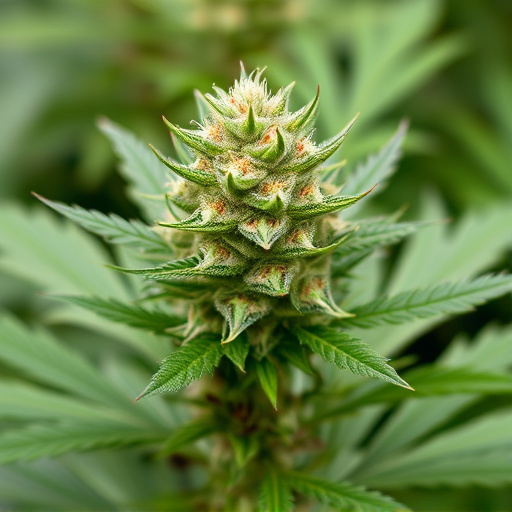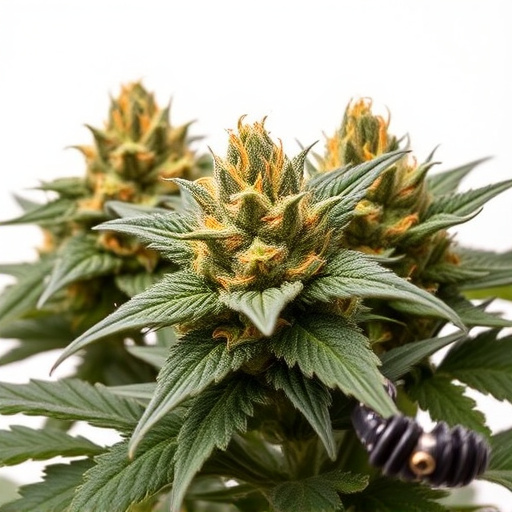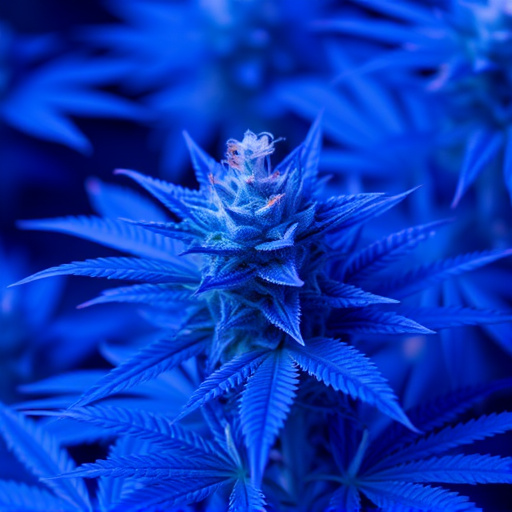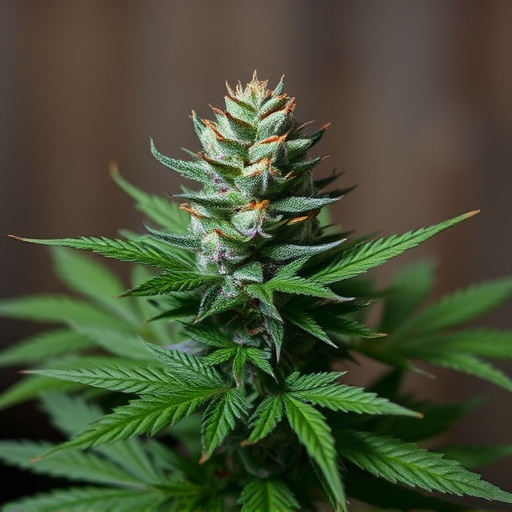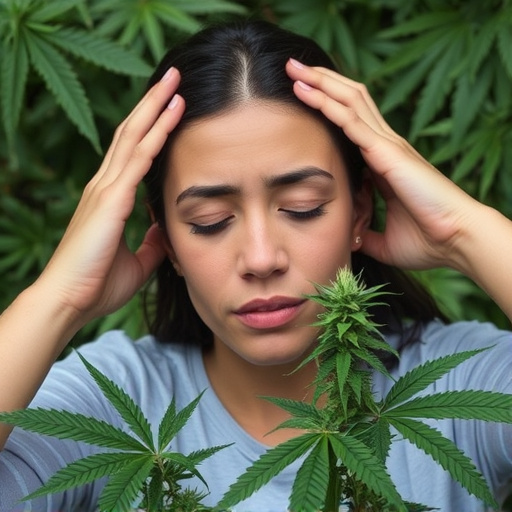Cannabis offers a natural alternative for migraine management through various compounds, notably cannabidiol (CBD) and tetrahydrocannabinol (THC). CBD-rich strains with low THC content provide pain relief and symptom alleviation without psychoactive effects. A responsible approach involves consulting healthcare professionals and starting with low doses to avoid side effects. This ensures safe and effective treatment for chronic migraines using cannabis strains specifically tailored to individual needs.
Cannabis flower has garnered attention for its potential medical benefits, particularly in alleviating specific conditions. One such area of interest is migraine management, where certain cannabis strains show promise in providing relief. This article explores how understanding the complex compounds within cannabis, including THC and CBD, can lead to targeted treatments. We delve into the science behind these compounds’ effects on the body, focusing on their potential to soothe migraines and offer safe, effective dosage guidelines for medical use.
- Understanding Cannabis Compounds and Their Effects
- Targeting Migraines with Specific Cannabis Strains
- Safety and Dosage Considerations for Medical Use
Understanding Cannabis Compounds and Their Effects

Cannabis flowers contain a diverse range of chemical compounds, primarily cannabinoids, each with unique therapeutic properties. Among them, tetrahydrocannabinol (THC) and cannabidiol (CBD) are the most well-known. THC is responsible for the plant’s psychoactive effects, inducing feelings of relaxation and altering sensory perception. This property makes it potentially effective in managing conditions like chronic pain and anxiety. On the other hand, CBD lacks psychoactive effects but has gained significant attention for its anti-inflammatory and anticonvulsant properties.
When considering cannabis strains for migraines, specific varieties high in CBD have shown promise. The antispasmodic effects of CBD can relax blood vessels and reduce inflammation, potentially alleviating migraine pain. Moreover, some studies suggest that THC may help mitigate the symptoms by interacting with the body’s endocannabinoid system, which plays a crucial role in regulating pain perception. Understanding these compounds and their interactions is essential in harnessing cannabis for medical purposes, especially for conditions like migraines.
Targeting Migraines with Specific Cannabis Strains

Cannabis has gained attention for its potential in treating various medical conditions, and one area where it shows promise is migraine management. Migraines are debilitating headaches characterized by intense pain, sensitivity to light and sound, and sometimes nausea. While traditional treatments include medications that come with side effects, specific cannabis strains have emerged as a natural alternative.
Certain cannabis strains, known for their high levels of cannabidiol (CBD) and low tetrahydrocannabinol (THC) content, are particularly effective in targeting migraines. CBD has anti-inflammatory properties and can help reduce pain and discomfort associated with migraines. These strains offer a promising approach to managing this condition without the psychoactive effects often linked to cannabis. By providing relief from pain and symptoms, these specific cannabis strains for migraines can significantly improve quality of life for those suffering from this chronic health issue.
Safety and Dosage Considerations for Medical Use

When utilizing cannabis for medical purposes, especially for conditions like migraines, understanding safety and dosage is paramount. Unlike recreational use, where potential risks may outweigh benefits, medical cannabis offers distinct advantages when used responsibly. Dosage varies widely depending on the patient’s condition, tolerance, and preferred method of consumption. For migraines, cannabis strains high in CBD (cannabidiol) or specific terpenes known for their analgesic properties can be beneficial.
Safety measures include starting with low doses to avoid adverse reactions and gradually increasing as needed. Consistency in dosage and strain selection is key to finding effective relief without causing side effects. Consulting healthcare professionals who specialize in cannabis medicine ensures patient safety and helps determine the most suitable treatment plan, especially when managing chronic conditions like migraines.
Cannabis flowers offer a promising avenue for medical treatment, particularly in managing migraines. Through understanding the complex compounds within cannabis, such as THC and CBD, specific strains can be targeted for their potent anti-inflammatory and pain-relieving properties. For individuals suffering from chronic migraines, exploring cannabis strains for migraines under professional guidance is a valid step towards finding relief. Safety and dosage considerations are paramount, emphasizing the need for research and personalized treatment plans to ensure the best outcomes while mitigating potential risks.
